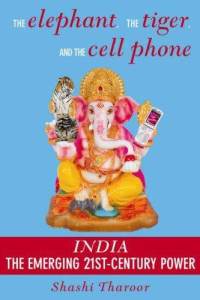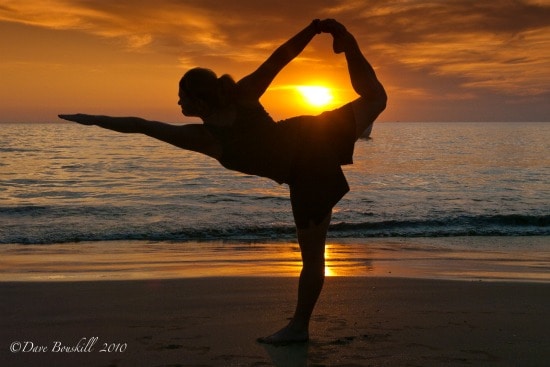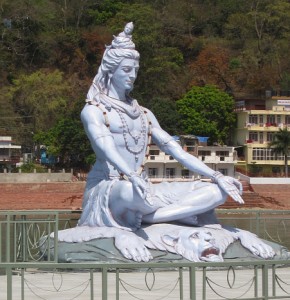Yoga, meditation and spirituality: The 2010 version
One of the top 10 Google searches in India in 2010 was “how to meditate.” While the debate in the west, especially in the USA, was raging over “who owns yoga,” Indians were using high-tech solutions — computers and advanced, online search algorithms — to reconnect with their spiritual heritage. I think this is one of the top stories of 2010. We are all about connection — hence Facebook’s popularity — and connecting with yourself at the deepest, or highest, level is the epitome.
Connecting with myself, in retrospect, was probably the main reason I went to India in the first place, back in 2005. Before I made that first six-month trip, India seemed like such a far-away place, such a mythical land, that I did not really believe you could actually get on a plane and fly there in a matter of mere hours. But now it feels like India and Canada — the east and the west — are coming closer together in so many ways. I’m not sure how I feel about this.
The east and west are each very powerful and effective in different ways. In the west, the power is externally focused. We are very good at so-called “material progress.” We are organized and efficient at creating wealth, technology, infrastructure. Consequently, we have a very high standard of living. But in the east, the emphasis is more on internal efficiency.
My hopes for 2011
I hope that western culture does not triumph; that it will not evolve to its inevitable end: a planet completely covered by strip malls, completely given over to consumerism and materialism. I hope that optimistic, spiritual thinkers like Carl Jung and Sri Aurobindo are proved right — that people are evolving towards a higher state of consciousness. In this realm, Indians are masters. Deepak Chopra once called the ancient Indian rishis (sages) “Einsteins of consciousness.” I wrote about his passion — and mine — for Sharing India’s wisdom with the world.
I hope it augurs well that Indians are wanting to know “how to meditate” and that a yoga revival takes place in India. I hope that the Hindu American Foundation’s “take back yoga” campaign achieves its aim of seeing yoga acknowledged as stemming from the Hindu / Indian tradition. In fact, I have an even greater hope — that Hinduism is finally seen in the most idealistic light, for what it could be: a worldview rooted in pluralism, tolerance for all faiths, a respect for mystery and uncertainty, a steadfast belief in dharma (“pattern of noble living”) and the knowledge that, as Mahatma Gandhi put it, truth is god (and not the other way around).
 I love Shashi Tharoor‘s chapter on Hinduism in The Elephant, the Tiger and the Cellphone: Reflections on India in the 21st Century (2007) and I highly recommend it for an idealistic and workable explanation of Hinduism. “Hinduism asserts that all ways of belief are equally valid. Hinduism, I assert, is a civilization, not a dogma,” Tharoor writes. I hope there is a “take back Hinduism” campaign that wrests it from both the stereotypes, judgments and biases of the west; and the fundamentalist strain that wants to reduce it to a clique, or worse.
I love Shashi Tharoor‘s chapter on Hinduism in The Elephant, the Tiger and the Cellphone: Reflections on India in the 21st Century (2007) and I highly recommend it for an idealistic and workable explanation of Hinduism. “Hinduism asserts that all ways of belief are equally valid. Hinduism, I assert, is a civilization, not a dogma,” Tharoor writes. I hope there is a “take back Hinduism” campaign that wrests it from both the stereotypes, judgments and biases of the west; and the fundamentalist strain that wants to reduce it to a clique, or worse.
I hope that by understanding what Hinduism really is, what it really represents, people will no longer question whether yoga is part of the Hindu tradition. (Of course yoga is part of the Hindu tradition. It is absurdly nit-picky at best, self-serving at worst, to say otherwise. It’s also absurd not to realize that traditions don’t exist in a vacuum; that that develop through many influences.)
I hope that western yoga practitioners begin to see and understand that the point of yoga is not exercise — it is to still your mind so that you can see the truth of your being and “yoke” yourself to a higher consciousness. One of my favourite quotes about yoga is: “If yoga’s not making you a better person, what are you doing it for?”
I also hope that Gross National Happiness or General Well-Being make it onto the mainstream political landscape in 2011. I hope that Jung and Aurobindo are right, and that we are all becoming more enlightened. And happier.
The power of intention
Rather than making a resolution this new year’s, try the power of intention. It’s a force that is much stronger and more effective than a resolution. Rather than imposing a rule on yourself, you align your energies to a wish, a goal, or a dream; or something you want to achieve or understand. It’s application is much broader and more subtle than a resolution. It also resists the failure/shame/remorse cycle that resolutions often provoke.
My intentions for 2011 include increasing my consciousness around certain specific issues — such as food, money and time — and to operate from an assumption of success and abundance. But I am open to outcome — and that’s one of the biggest differences between an intention and a resolution. Do your best and do it with joy — not with an eye to the reward. Pray for the mountain to be moved and push — and accept if it does not move. Accepting your destiny is the fastest route to happiness. As they say in India, “Ram knows best.”
Happy new year.

Mariellen Ward is a freelance travel writer whose personal style is informed by a background in journalism, a dedication to yoga and a passion for sharing the beauty of India’s culture and wisdom with the world. She has traveled for about a year altogether in India and publishes an India travel blog, Breathedreamgo.com. Mariellen also writes for magazines and newspapers.











